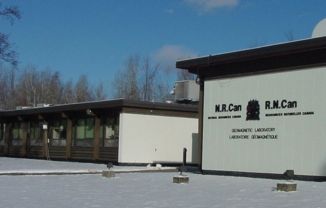
A proposed light rail transit line installation could affect a crucial scientific observatory and jeopardize a national network used to monitor weather in space, according to documents made available to news media this week.
Internal documents reviewed by The Canadian Press reportedly reveal Natural Resources Canada’s (NRCan) concerns that the installation of a $2.1-billion electric transit line near its geomagnetic research laboratory would affect the sensitive equipment within the complex. Located in the east end of Ottawa, the laboratory is responsible for monitoring the effects of energy particles emitted from the sun on Earth’s magnetic field and technologies such as satellites and GPS navigation systems. It serves as the headquarters of the government’s geomagnetic monitoring service and sets calibration standards for 12 other observatories around the country.
“Observations of magnetic noise at similar facilities internationally, and modeling by NRCan and other groups, suggest that such LRT systems are very powerful sources of low-frequency magnetic noise, and will generate sporadic noise levels sufficient to exceed international standards,” states the document obtained by The Canadian Press.
“Predicted noise will significantly impact observatory operations at Anderson Road and render the calibration facility inoperable at its present location.”
According to the document, observatory sites are chosen under strict criteria in order to meet international standards for magnetic interference. The nearest station on the 13-stop Confederation Line is expected to be placed above ground approximately seven kilometers away from the laboratory, a distance considered too close to the research compound. The document notes that the transit line’s design has already been altered in an attempt to reduce its expected effect on the laboratory, but cautions that the full impact will not be known until the transit line is operational in 2017.
Natural Resources Canada is not the first to raise concerns regarding the effects of light rail installations on research laboratories. Earlier this year, University of Colorado officials called for a revision of plans for a new light rail installation near the Anschutz Medical Campus in Aurora, Colo. in order to protect sensitive equipment in their medical and research facilities on campus from vibrations and electromagnetic interference.
According to a NRCan spokeswoman, the department is considering moving the calibration station to avoid the problem entirely.
“There are several diverse NRCan programs which operate from and rely on the Anderson road facility. There are ongoing discussions about the possible relocation of the magnetic calibration facility but, at this stage, the costs are not yet defined,” Jacinthe Perras said in an email to The Canadian Press.
She added that the department will “continue to review” its options for the electromagnetic monitoring network if the “national reference” Ottawa observatory is compromised.






